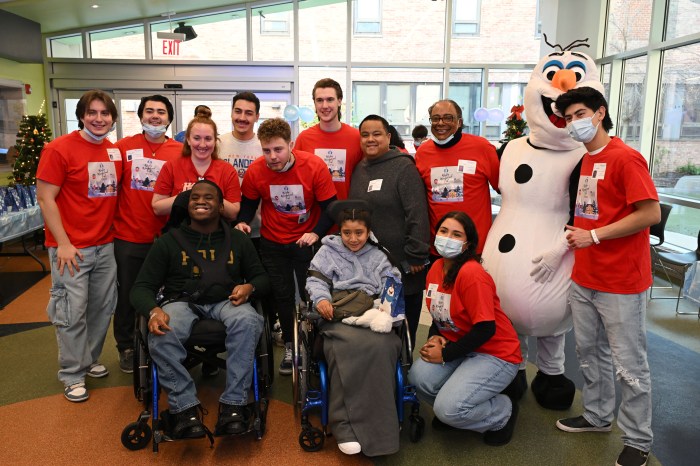The Out2Play organization will be putting a smile on thousands of Queens children’s faces when they return to their school in September and see that their school’s playground has been transformed into a new and improved jungle gym.
Out2Play, a non-profit group dedicated to building and refurbishing school playgrounds throughout New York City, will build 26 new playgrounds in the five boroughs, four of which will be located in Queens, by the end of this year.
“Play spaces provide the children with an outlet for physical activity and a place to interact with each other in a positive and constructive manner,” said Andrea Wenner, founder and Executive Director of Out2Play. “Our design process is a collaboration with the schools, so we spend about half a day with the architect and meeting with parents, teachers, children, etc.” to find out “what games kids like to play and the priorities and preferences of each individual school.”
Since it was founded in 2005, Out2Play has raised over $10 million from philanthropic organizations, corporate sponsorships, and government, successfully completing 15 playgrounds around the city. Out2Play is now implementing a citywide program to rebuild elementary school playgrounds in hopes of providing students the health and education benefits of outdoor play.
Queens schools to receive new playgrounds are P.S. 12 in Woodside, P.S. 81 in Ridgewood, P.S. 134/P.S. 233 in Jamaica and P.S. 153 in Maspeth. The projects are supported in part by Queens Borough President Helen Marshall, Councilmember Leroy Comrie and the Audrey and Martin Gruss Foundation, which donated $500,000 to co-sponsor 24 of the 26 renovations.
“For Queens to truly flourish we must continue to invest in our borough’s youngest residents. These playgrounds are true investments in the health and quality of life of our borough’s children,” said Marshall. “Sufficient play spaces are absent from too many of our communities and I’m ecstatic about the opportunity to team up with Out2Play to fulfill that need.”
Students will use the playgrounds during recess, some physical education classes and other times when teachers take classes outdoors as part of academic studies. Some schools may elect to keep their playgrounds open to the public during non-school hours.
Renovated playgrounds include all new slides, monkey bars, basketball courts, kickball diamonds, soccer and football fields, tracks, hopscotch, benches, trees, four square and many other blacktop games.
“We feel like playgrounds should be a basic part of the school system,” said Wenner. “Having these playgrounds is not a luxury for these kids; it should be an automatic resource.”
Out2Play estimates that 118 elementary schools in New York City lack playground access, leaving 100,000 children without a safe outlet for activity during the day. The average incomes of the council districts where the 15 playgrounds were built are $23,426 as compared to the citywide average of $38,293. None of the original 15 schools is located near a park or playground.
“The future of this city lies in the hands of today’s youth and nurturing their health and development should be a top priority,” said Wenner. “With approximately 43 percent of New York City schoolchildren overweight, this is not just about entertaining kids at recess, it’s about their health.”

































